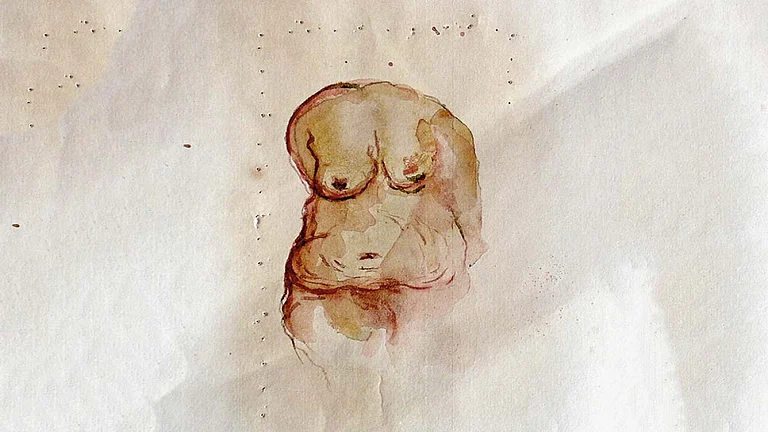In Maharashtra, where the Mahayuti (BJP-Shiv Sena-NCP) has been surging ahead, women voted in large numbers this year. In fact, there was an increase of 5.95 percentage points in women voters, with voter turnout rising from 59.26 per cent in the 2019 elections to 65.21 per cent this year, as per data by the Election Commission of India (ECI). Much of this increase was focused around the Mumbai Metropolitan Region along with its satellite towns, which registered a nearly 7 per cent jump. This region sends 60 MLAs to the 288-member Maharashtra Assembly. This region saw about 13 lakh more women voters than the 40.18 lakh who voted in the last election. Thane district recorded an 11-percentage point jump in women voters, while there was a nine-percentage point jump in the tribal-dominated Palghar district.
Ladki Bahin to Maiyya Samman: Were Women Voters Game Changers In Jharkhand, Maharashtra?
Women voters may have helped the fortunes of the winning parties in both Jharkhand and Maharashtra, where the counting of votes is underway after a particularly polarising Assembly election season
As results poured in from Maharashtra, giving the Mahayuti alliance a clear lead, it was clear where these women’s votes went. The Mahayuti government’s Ladki Bahin Yojana, under which the state has been providing Rs 1,500 to women over the last four months, has been popular among them. Many pre-poll reports attributed the rise in women voters to the Ladki Bahin Yojana and other schemes announced by the Eknath Shinde government in pre-poll Maharashtra, such as the scholarship scheme for EWS girls and three unrestrained gas cylinders for 52 lakh households.
Sops for Women
Analysing the election results in Maharashtra, senior journalist Neerja Chowdhury said that “money in hand means a very different thing for a woman voter, and the Mahayuti’s cash sop for women seems to have worked in favour of Shinde and the BJP”. She added that the implementation of the scheme, which was launched just five months ago, has been very efficient. “Every woman I have interacted with in Maharashtra about the scheme said she had received the money,” she said.
Similarly, in Jharkhand, where the Jharkhand Mukti Morcha (JMM)-led INDIA bloc is inching closer to victory, the party’s direct benefit transfer scheme for women, known as Maiya Samman, is being seen as a game changer. The scheme provides financial assistance of Rs 1000 per month to eligible women beneficiaries in Jharkhand. After two phases of voting, the turnout of women voters was higher than men in over 85 per cent out of the total 81 assembly constituencies in the tribal-dominated state.
“Even though the scheme was implemented just a few months ahead of the election, probably keeping the elections in mind, it seems to have had an impact on the ground as women were actually receiving cash in their bank accounts,” Ranchi-based political activist S Ali states. He also adds that the “politics of hate” that the BJP had been peddling failed. “BJP did not understand or articulate the issues of Jharkhand and instead tried to attack the Hindu-Adivasi-Muslim dynamic of the state and its ‘Jharkhandi’ identity”.
In fact, all parties seem to now understand the importance of women’s vote, with DBT schemes emerging as the best way to woo the growing constituency.
A similar result was seen for parties like BJP, Congress and AAP in previous elections in other states. In Madhya Pradesh, for instance, the Laadli Behen Yojana, which was launched by former Chief Minister Shivraj Singh Chouhan a few months before the Assembly elections held in November 2023, went a long way in securing support for the BJP among women voters. The scheme was launched at Rs 1000 per month, and later, the amount was increased to Rs 1250. In the run-up to the recent bypolls in MP, the party promised to increase the amount up to Rs. 3000 per month.
In Karnataka, Congress scripted a victory after ten years. Analysts like Tara Krishnaswamy, who works with the Congress, had at the time told Outlook that the promise of Rs 2,000 credited to the account of women heads of households every month as well as free bus rides assured by the Congress helped win the party support from women in the marginalised sections.
Many Voters, No Candidates
The closing gender gap in voter turnout can, in part, be attributed to sustained efforts made by institutional bodies like the EDI to promote women’s electoral participation through programmes like the Systematic Voters’ Education and Electoral Participation, initiated in 2009, with the key objective to increase women voters’ turnout. A report by The Guardian notes this to be a time when an “upward trajectory in female turnout clearly begins”.
Self-empowerment theories have also been posited by economists based on analysis of National Economic Survey data. But voter turnout has not risen proportionately with women’s political particiation.
The marginalisation of women in electoral participation primarily stems from political party competition, which can be mainly attributed to “party competition structure in the Indian subcontinent that is encumbered by inherent male dominance and a patriarchal mindset that excludes women from the electoral process,” politician scientist Praveen Rai writes in Economic Political Weekly.
Even this year, ECI data indicates that only 8 per cent of the total candidates who fought the assembly elections in Maharashtra are women and only 23 women had won the elections in 2019.
In comparison, Jharkhand saw a higher number of women in the poll fray, contesting 54 out of the 81 assembly seats thataccount for 66 per cent of the total seats. However, their overall presence remained low compared to men, with 128 women contesting against 879 men, as per media reports. Of the total 1,211 candidates in the state, women formed only 10.56 per cent.
